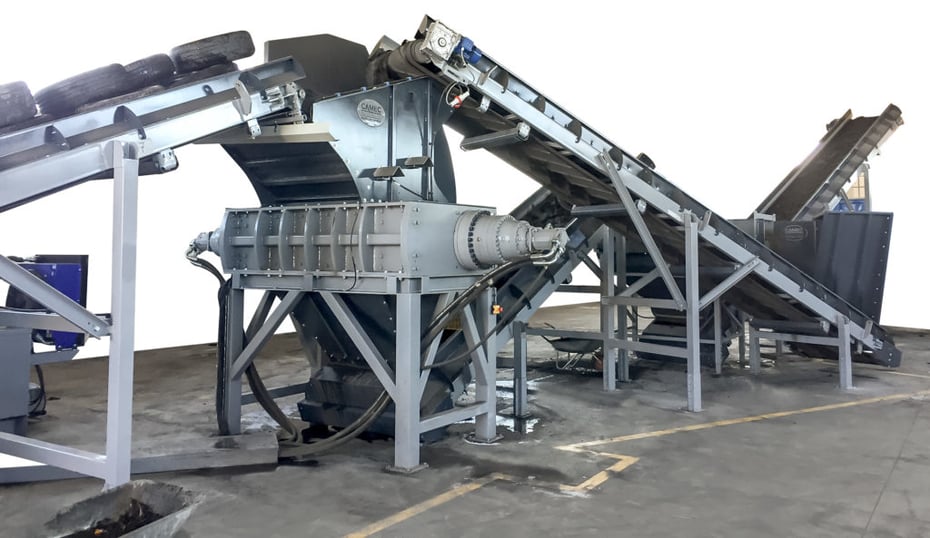Properly disposing and recycling tires is an obligation established by the law: these particular waste, in fact, take over a century to degrade, and it is for this reason that for many years the regulations have forbidden the disposal of discarded tires in landfills, but require treat them in special facilities intended for their recycling and the recovery of the various materials present inside them.
Once sent for recycling, the tires are subjected to shredding processes necessary to extract the steel and textile fiber contained within them and to separate the rubber component, which is then further ground and reduced to grain or powder.
Thus shredded, the rubber can be reused as a secondary raw material: the main destination of recycled rubber is the production of road asphalt, but depending on the grain size obtained, it can also be used for other industrial applications, such as the construction of thermo-acoustic insulation panels. and road barriers, or for the paving of sports fields and athletics tracks, or in various building sectors.
CAMEC solutions for the treatment of end-of-life tires (ELTs)
The recycling of tires requires a series of successive steps, necessary to gradually reduce the granulometry of the waste and to separate the various components present in it in an optimal manner. For this, CAMEC proposes the use of different machines (TR2A shredders and GS empowered single-rotors, MG granulators …) that can be installed at the same time or supplied at different times, depending on the customer’s preferences and needs.
The solutions proposed by CAMEC make it possible to carry out all the steps necessary for the complete recovery of the materials present in the waste: initially the out of use tire is subjected to a coarse grinding (ciabattatura) through the use of a blade machine; the shredded material is then sent to a second shredding machine which cuts it further, transforming it into chipped rubber with a diameter not exceeding 20 mm. In this processing phase, a first separation of the materials that make up the waste takes place, and canvas and steel are separated from the rubber component and recovered for subsequent reuse. Subsequently, the ground materials are further reduced in volume and transformed into grain or powder thanks to a granulator that allows you to control the size of the output material; in this phase, the last residues of metal and textile fiber present between the rubber are separated, and the steel component is then sent for further processing, which allows it to be cleaned and brought back to 99% purity.
The CAMEC plants for the treatment of tires make it possible to obtain secondary raw materials of excellent quality, with variable granulometry depending on the customer’s needs and the intended use of recycled rubber. At the same time, they allow the steel present in tires to be recovered as efficiently as possible, bringing it back to a very high level of purity.

